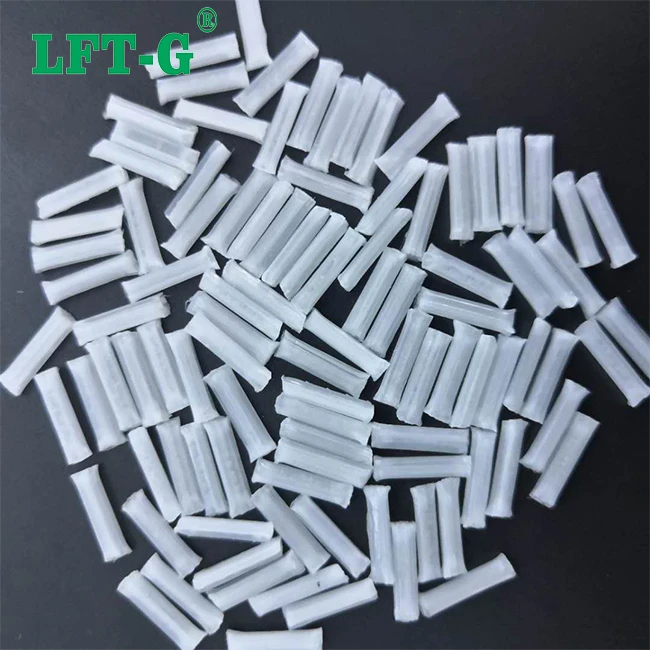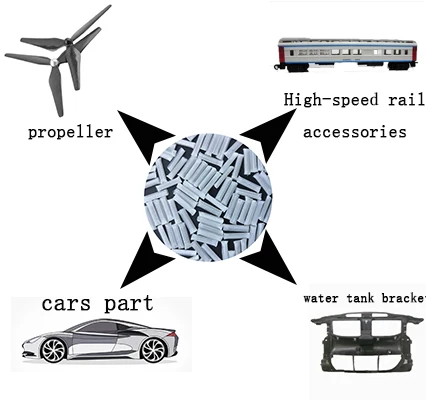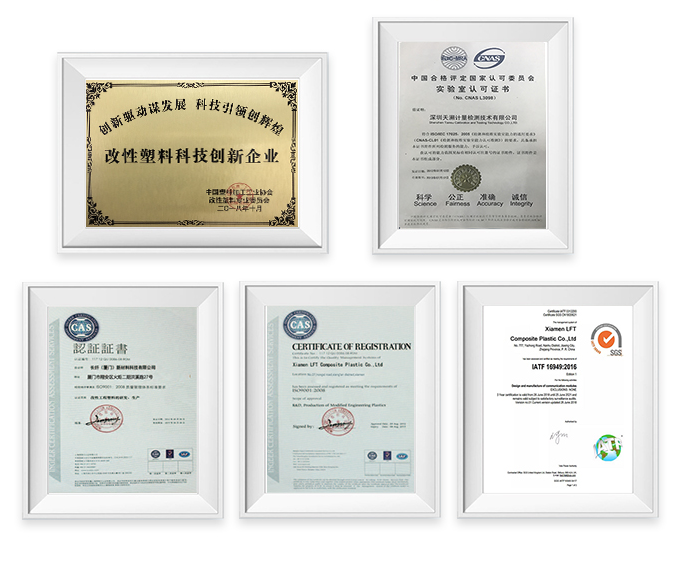رقم الصنف.:
PA12-NA-LGFدفع:
Discussedأصل المنتج:
Chinaاللون:
Natural color or Customizedميناء الشحن:
Xiamenالمهلة:
2-10 working daysPA 12، المعروف أيضًا باسم Nylon 12، هو بلاستيك هندسي متعدد الاستخدامات معروف بخصائصه الاستثنائية وتطبيقاته واسعة النطاق. بفضل قوة الشد العالية والمتانة والمقاومة الكيميائية والثبات الحراري، أصبح PA 12 خيارًا مفضلاً في صناعات مثل السيارات والتصنيع الصناعي والنفط والغاز والكهرباء والإلكترونيات والمزيد.

ما هو السلطة الفلسطينية 12؟
PA 12، ويشار إليه أيضًا باسم البولياميد 12 أو النايلون 12، هو بوليمر لدن بالحرارة ينتمي إلى عائلة البولياميدات. وهو معروف بتركيبته الكيميائية الفريدة التي تمنحه خصائص مميزة ويجعله مناسبًا لمجموعة واسعة من التطبيقات.
يتكون PA 12 من وحدات متكررة من مجموعات الأميد (-CO-NH-) المرتبطة بذرات الكربون. يمنح هذا الهيكل المادة قوتها ومتانتها ومقاومتها للتآكل. كما أن وجود مجموعات الأميد يضفي استقرارًا حراريًا ممتازًا على PA 12، مما يسمح له بتحمل درجات الحرارة المرتفعة دون أن يفقد خصائصه الميكانيكية.
يساهم التركيب الجزيئي لـ PA 12 في خصائصه المفيدة. توفر السلاسل الطويلة من ذرات الكربون المرونة والصلابة للمادة، مما يمكنها من مقاومة الصدمات والتشوه. بالإضافة إلى ذلك، توفر مجموعات الأميد تفاعلات قوية بين الجزيئات، مما يؤدي إلى قوة شد عالية ومقاومة للمواد الكيميائية.
يتم تصنيع PA 12 من خلال عملية البلمرة، حيث يتم ربط مونومرات النايلون 12 كيميائيًا معًا لتكوين سلاسل طويلة. يمكن التحكم في هذه العملية لتحقيق أوزان جزيئية محددة وخصائص المواد المطلوبة.
نظرًا لتركيبته الفريدة، يُظهر PA 12 خصائص مفضلة مثل ثبات الأبعاد الممتاز، وامتصاص الرطوبة المنخفض، وخصائص العزل الكهربائي الجيدة. هذه السمات تجعل PA 12 خيارًا مفضلاً لمختلف التطبيقات الصناعية التي تتطلب القوة والمتانة والموثوقية.
اقرأ المزيد: ما هو PA12-LCF؟
خصائص المواد PA 12
PA 12 is a thermoplastic material that possesses a range of desirable properties. These properties make it a preferred choice for various industrial applications. Let's delve into the Nylon 12 material properties and understand why it is highly regarded.
*High Tensile Strength: PA 12 material exhibits exceptional tensile strength, making it ideal for applications that require robust and reliable materials.
*Excellent Durability and Toughness: PA 12, also referred to as Nylon 12, offers excellent durability and toughness, ensuring its ability to withstand harsh conditions and resist wear and tear.
*Impact Resistance: Nylon 12 material properties include notable impact resistance, allowing it to withstand sudden forces without cracking or breaking.
*Chemical Resistance: PA 12 Nylon demonstrates strong resistance to various chemicals, making it valuable in industries where exposure to solvents, oils, and fuels is common.
*Thermal Stability: PA 12 material exhibits remarkable thermal stability, maintaining its mechanical properties even at elevated temperatures. This property is advantageous in applications involving heat exposure.
*Low Moisture Absorption: Nylon 12, or PA 12, demonstrates low moisture absorption, resulting in enhanced dimensional stability and reliability in humid or wet environments.
*Dimensional Stability: The material properties of PA 12 Nylon ensure excellent dimensional stability, maintaining its shape and size over time, even under changing environmental conditions.
*Good Electrical Insulation Properties: PA 12 material possesses favorable electrical insulation properties, making it suitable for applications that require effective electrical insulation to prevent malfunctions or short circuits.
In summary, Polyamide 12 possesses a range of advantageous material properties that contribute to its versatility and suitability for various applications. Its strength, durability, chemical resistance, thermal stability, low moisture absorption, and electrical insulation properties make it a reliable choice for industries seeking a high-performance thermoplastic material.
Comparison of PA 12 with PA 6
Nylon (PA) 12 vs Nylon (PA) 6
When considering the comparison between PA 12 and PA 6, commonly known as Nylon 12 and Nylon 6, respectively, several key factors come into play. Let's explore the differences and similarities between Nylon 12 vs Nylon 6.
Starting with the chemical structure, both PA 12 and PA 6 belong to the family of polyamides and share similar amide group (-CO-NH-) linkages. However, they differ in terms of their monomer composition and the number of carbon atoms in their repeating units.
PA 12 Nylon is derived from the monomer laurolactam, while Nylon 6, or PA 6, is synthesized from the monomer caprolactam. PA 12 has a higher number of carbon atoms in its repeating unit compared to PA 6. This variation in molecular structure leads to distinct material properties and performance characteristics.
In terms of mechanical properties, PA 12 generally exhibits higher tensile strength and impact resistance than PA 6. Nylon 12's enhanced toughness and durability make it suitable for applications that require robust materials capable of withstanding mechanical stress and impact forces.
Chemical resistance is another area where PA 12 and PA 6 differ. PA 12 demonstrates superior resistance to chemicals, solvents, oils, and fuels, making it highly suitable for applications in the automotive, chemical, and oil and gas industries. On the other hand, PA 6 offers good chemical resistance but may not perform as well as PA 12 in highly aggressive chemical environments.
Thermal stability is another factor to consider. PA12 Nylon exhibits better resistance to high temperatures than PA 6. It can retain its mechanical properties and dimensional stability even at elevated temperatures, making it suitable for applications involving heat exposure.
Regarding moisture absorption, PA 12 and PA 6 demonstrate similar characteristics. Both materials have low moisture absorption rates, leading to enhanced dimensional stability in humid or wet environments.
Overall, while both PA 12 and PA 6 share the advantages of polyamides such as good mechanical properties and chemical resistance, PA 12 offers improved strength, impact resistance, chemical resistance, and thermal stability compared to PA 6.
Application of PA 12 filled Long Glass Fiber

Introduction of LFT-G
في LFT-G، نحن نفخر بكوننا شركة رائدة في تصنيع مواد LFT في الصين، ومتخصصة في إنتاج مركبات بلاستيكية هندسية مملوءة بـ LGF وLCF عالية الجودة. خبرتنا والتزامنا بتقديم منتجات استثنائية جعلتنا شريكًا موثوقًا لمختلف الصناعات التي تبحث عن حلول بلاستيكية موثوقة.
باعتبارنا أحد اللاعبين الراسخين في السوق، ينصب تركيزنا على إنتاج مركبات بلاستيكية هندسية مملوءة بـ LGF وLCF عالية الجودة تلبي المعايير الصارمة لعملائنا. نحن ندرك أهمية المواد الموثوقة في عملية التصنيع، ولهذا السبب نعطي الأولوية لإنتاج مركبات عالية الأداء تلبي متطلبات الصناعة وتتجاوزها باستمرار.
يتم تطوير المركبات البلاستيكية الهندسية المملوءة بـ LGF وLCF من LFT-G باستخدام أحدث تقنيات وعمليات التصنيع. يضمن فريق الخبراء المتخصص لدينا أن كل دفعة من مركباتنا تخضع لإجراءات مراقبة الجودة الصارمة لضمان الاتساق والموثوقية. نحن نلتزم ببروتوكولات التصنيع الصارمة وننفذ طرق اختبار متقدمة للتأكد من أن منتجاتنا تلبي المواصفات المطلوبة باستمرار.
من خلال الفهم العميق للاحتياجات المتنوعة للصناعات المختلفة، تم تصميم مركباتنا البلاستيكية الهندسية المملوءة بـ LGF وLCF خصيصًا لتطبيقات محددة، مما يوفر الأداء الأمثل والمتانة. سواء كنت تحتاج إلى مركبات لمكونات السيارات، أو الأجزاء الكهربائية والإلكترونية، أو المعدات الصناعية، أو السلع الاستهلاكية، فإن LFT-G لديها الخبرة اللازمة لتلبية متطلباتك.
نحن نفخر بنهجنا الذي يركز على العملاء، ونسعى جاهدين لبناء شراكات طويلة الأمد مبنية على الثقة والموثوقية وخدمة العملاء المتميزة. فريقنا المتخصص من المحترفين على استعداد دائمًا لتقديم الدعم الفني والتوجيه والحلول المخصصة لتلبية احتياجات مشروعك الفريدة.
إذا كنت تبحث عن مركبات بلاستيكية هندسية مملوءة بـ LGF وLCF عالية الجودة، فإن LFT-G هنا لتكون شريكك الموثوق به. اتصل بنا اليوم لمناقشة متطلباتك المحددة، ودع فريقنا يساعدك في العثور على الحل الأمثل لطلبك.
